We expected Palermo, Italy, to be gritty, rough-around-the-edges, largely without charm or intrigue. Decades of stories about the economic situation in southern Italy and the considerable Mafia power didn’t give us high hopes, but we also didn’t feel like we could skip the capital city on our trip through Sicily. Still, we wondered about what things to do in Palermo and whether we would like it at all.
What we found was a city with blemishes, but what city doesn’t have those?
In Palermo, we also found a city that’s a mix of fascinating influences thanks to its location at the crossroads of the Mediterranean (and its many occupiers) and a city with amazing food, friendly people, and a cultural and religious history stretching back for millennia. It’s safe to say that it was much more than a pleasant surprise. If you’re wondering what to do in Palermo like we were, here’s a look at some of the fun spots and experiences we uncovered.
- Visit Palermo Cathedral
- Shop at the local markets
- Take a city tour
- Try Palermo street food
- See Martorana and Church of San Cataldo
- Explore Quattro Canti
- See street art
- Marvel at Palatine Chapel
- Sample gelato with brioche
- Visit St. John of the Hermits
- See the Praetorian Fountain
- Tour Teatro Massimo
- Go underground at Capuchin Monastery Catacombs
- Visit Mondello Beach
- Walk through Porta Nuova
- See the Cathedral of Monreale
- Wander the streets of Cefalu
Visit Palermo Cathedral
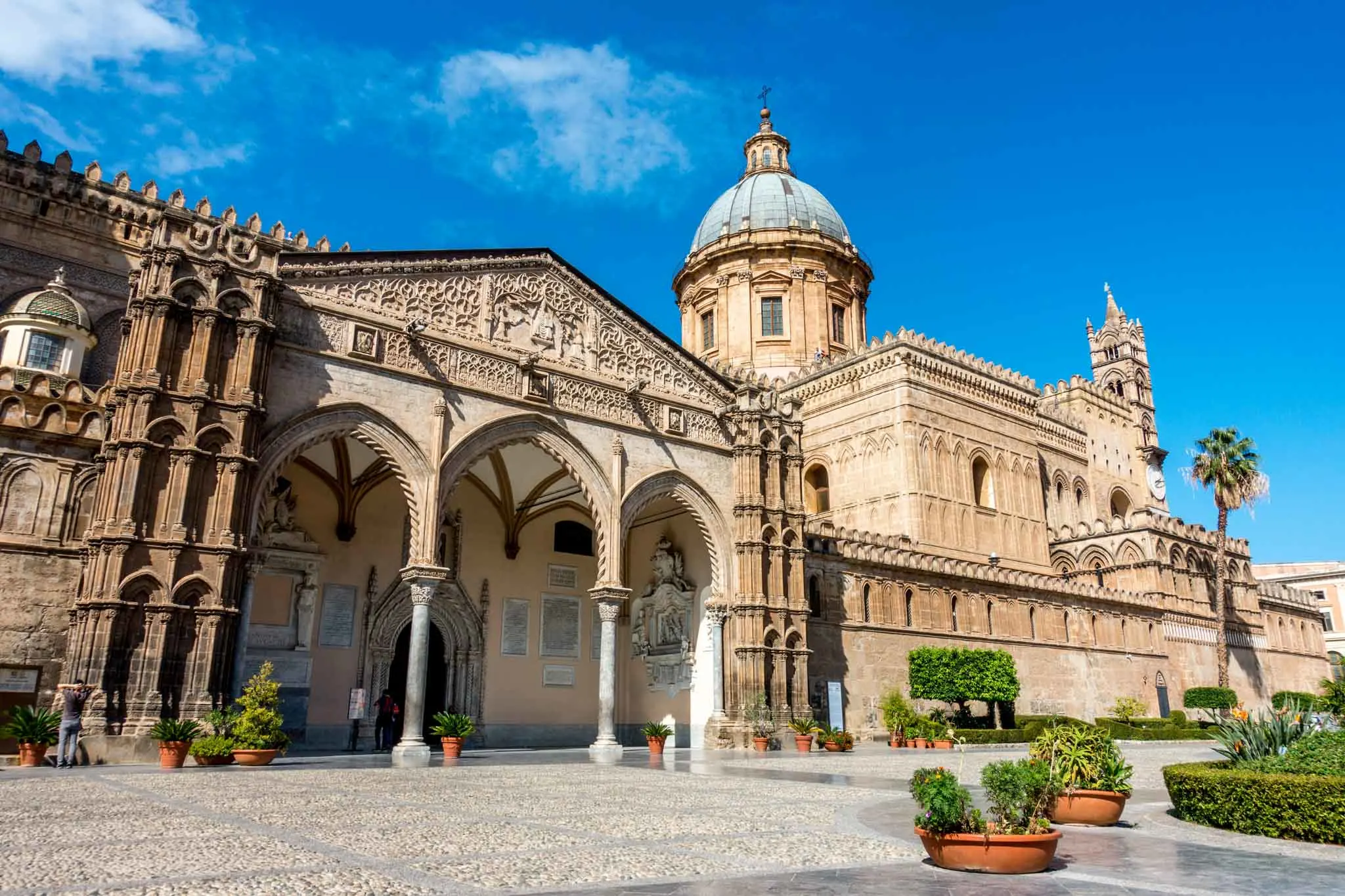
Palermo is a city full of grand churches, but none is grander than the Palermo Cathedral. Originally constructed in 1185, the Cathedral has been added to, restored, and renovated over the years in line with the style of the times and the aesthetics of those in charge. Hundreds of years of changes make its style unique–from Moorish to Catalan Gothic and lots in between.
Inside the cathedral are several royal tombs, including that of Roger II, founder of the Kingdom of Italy. The treasury houses a collection of jewels and religious relics, most notably a gem-encrusted crown from the 13th century.
Because of its architecture marrying Western, Byzantine, and Islamic influences, the Palermo Cathedral has been designated as a UNESCO World Heritage Site along with cathedrals in Cefalu and Monreale, the Church of San Giovanni degli Eremiti, the Palatine Chapel, and others.
Shop at the local markets
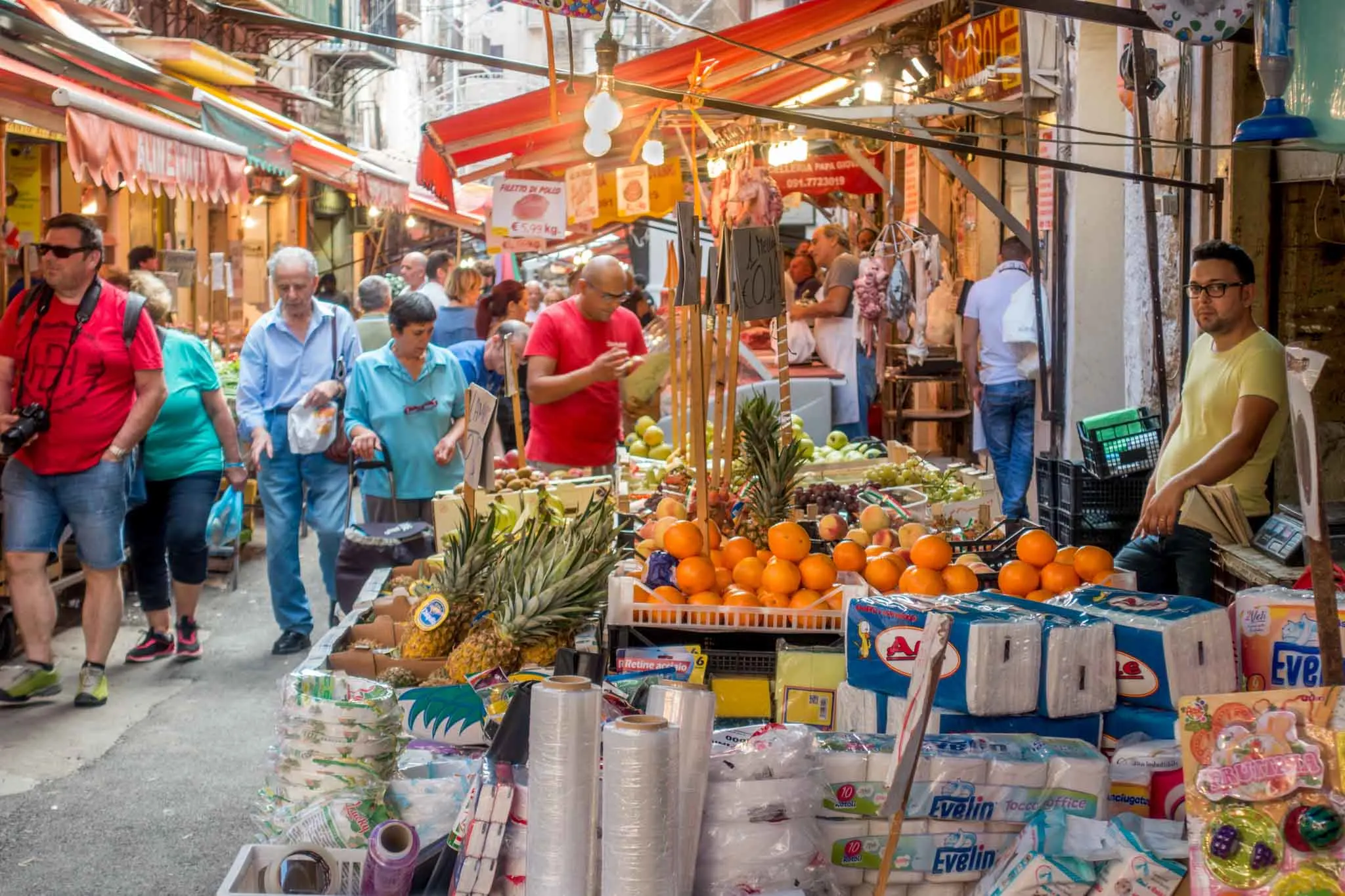
There’s just something about markets. The energy is infectious, the smells are mouthwatering, and the colors are delightful. Plus, visiting a market shows you an authentic slice of life. We love them, which is why they’re almost always on the top of our list from Bologna to the streets of Trastevere in Rome.
The three main markets in Palermo are Ballaro’, Capo, and Vucciria—each within about 15 minutes’ walk of the others in the city center.
Ballaro’
The most famous food market in the city, Ballaro welcomes thousands of locals and tourists every day. The vendors communicate with each other in a sing-song way that reverberates throughout the market and makes for a unique experience.
Full of spices, fresh produce and meats, and lots of Sicilian street food, a visit to Ballaro is one of the top things to do in Palermo. Choose this one if you only have time to visit one market on your trip.
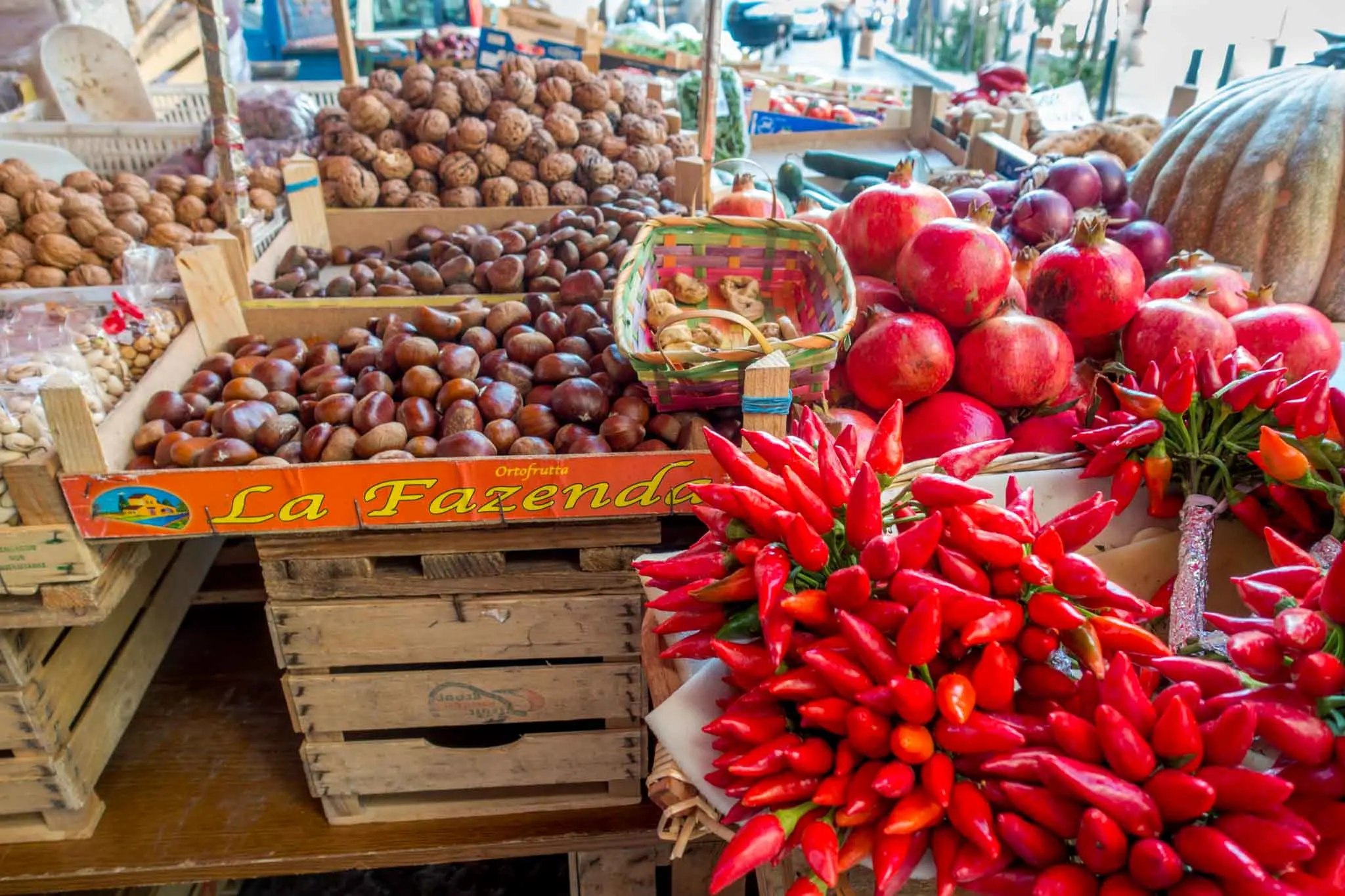
Capo
The unique thing about the Capo market is the number of cooks. You’ll find a wide selection of interesting produce, and there are also lots of people just waiting to help you try more street food or to cook up the seafood or meat purchase you made a few stalls down. It’s a great place to sample.
Vucciria
A bit calmer than Ballaro, La Vucciria market spreads through the side streets around the Piazza San Domenico. There are lots of tented produce stalls with the requisite selection of fruit and vegetables, though the group of eager vendors is noticeably smaller. You’ll also find lots of flea market-type merchandise here, if you’re looking for Sicilian treasures.
Take a city tour
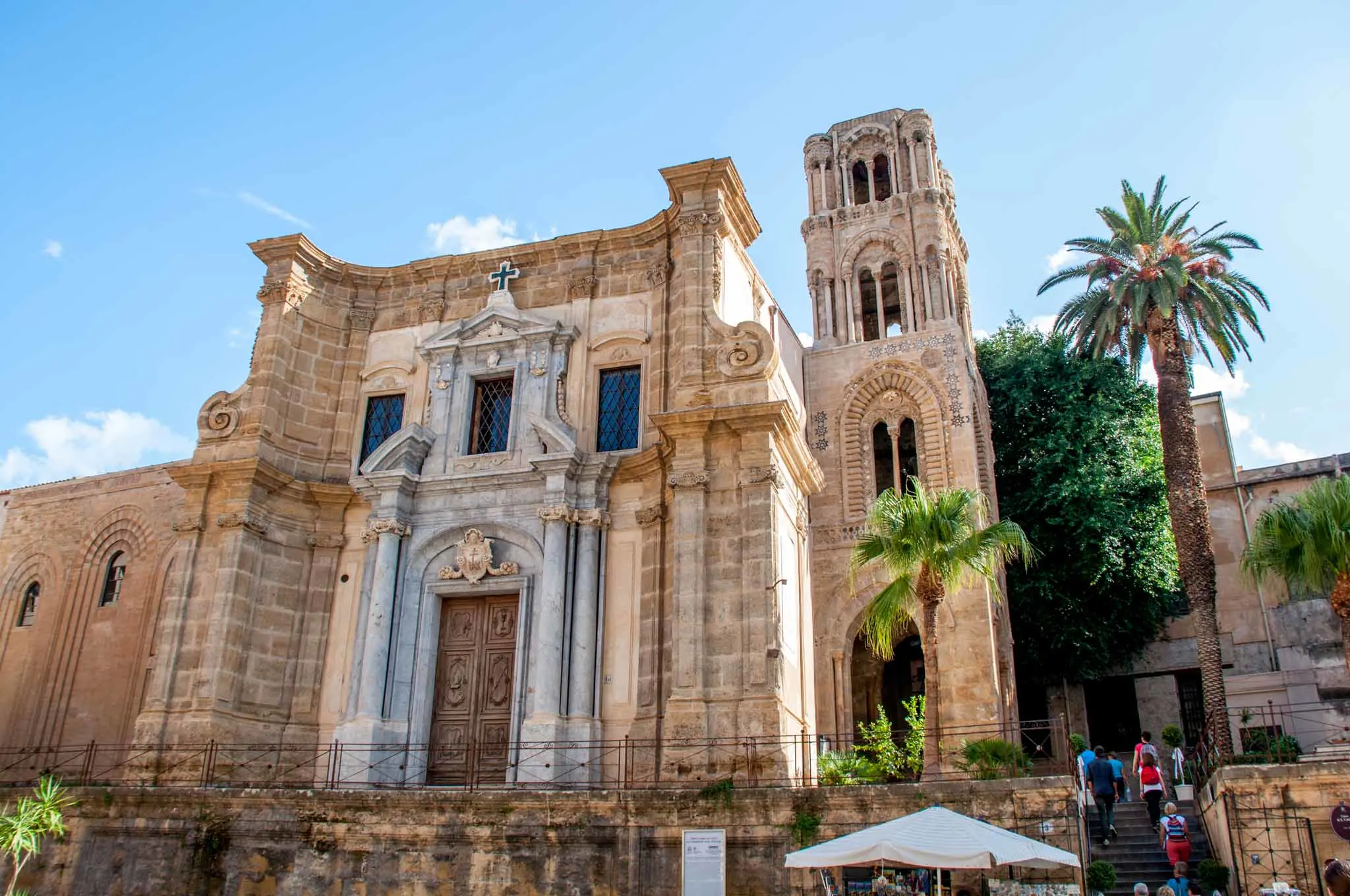
Tours are a great way to orient yourself in a new city and to see a lot of things in a short period of time. Especially if it’s your first day visiting, a tour can be ideal because you get insights straight from a local.
A food tour is always our number one choice when visiting a city. This walking tour pairs seeing the Palermo sites with trying street food. As an alternative, this bike tour lets you see the city in a unique way and also includes sampling local specialties.
If you’d rather stick to sightseeing, check out the hop-on/hop-off bus or explore the city in a vintage Fiat 500.
Try Palermo street food
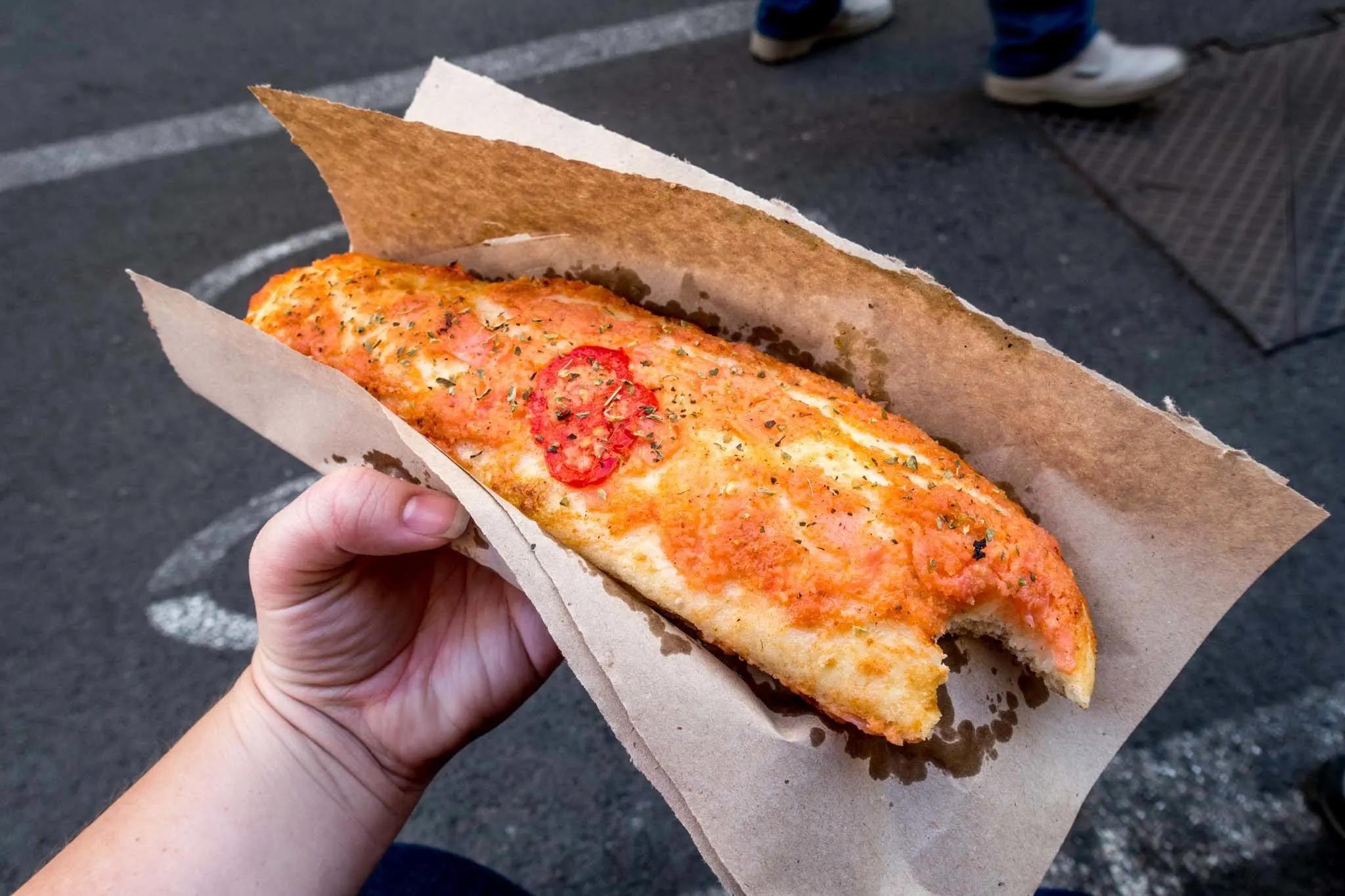
There are few better ways to experience a city than by trying its food. On a visit to Palermo, street food is the way to go.
The area in and around the city’s three markets teems with vendors at kiosks and carts peddling some of the tastiest items around. Don’t be dissuaded that some of the spots might seem a little unrefined—generations of Sicilians swear by the places.
When it comes to street food, the greasier the better. You can try out panelle (fritters with chickpea flour), potato croquettes known as crocche, or fried rice balls called aracine. Our favorite was sfincione, a thick Sicilian bread, topped with tomatoes, onions, and a bit of oregano. If you’re feeling much more adventurous than we were, try out the Sicilian street food known as Pani ca’ Meusa, or, a spleen sandwich.
See Martorana and Church of San Cataldo
Overlooking Piazza Bellini are two churches next door to each other that couldn’t be more different.
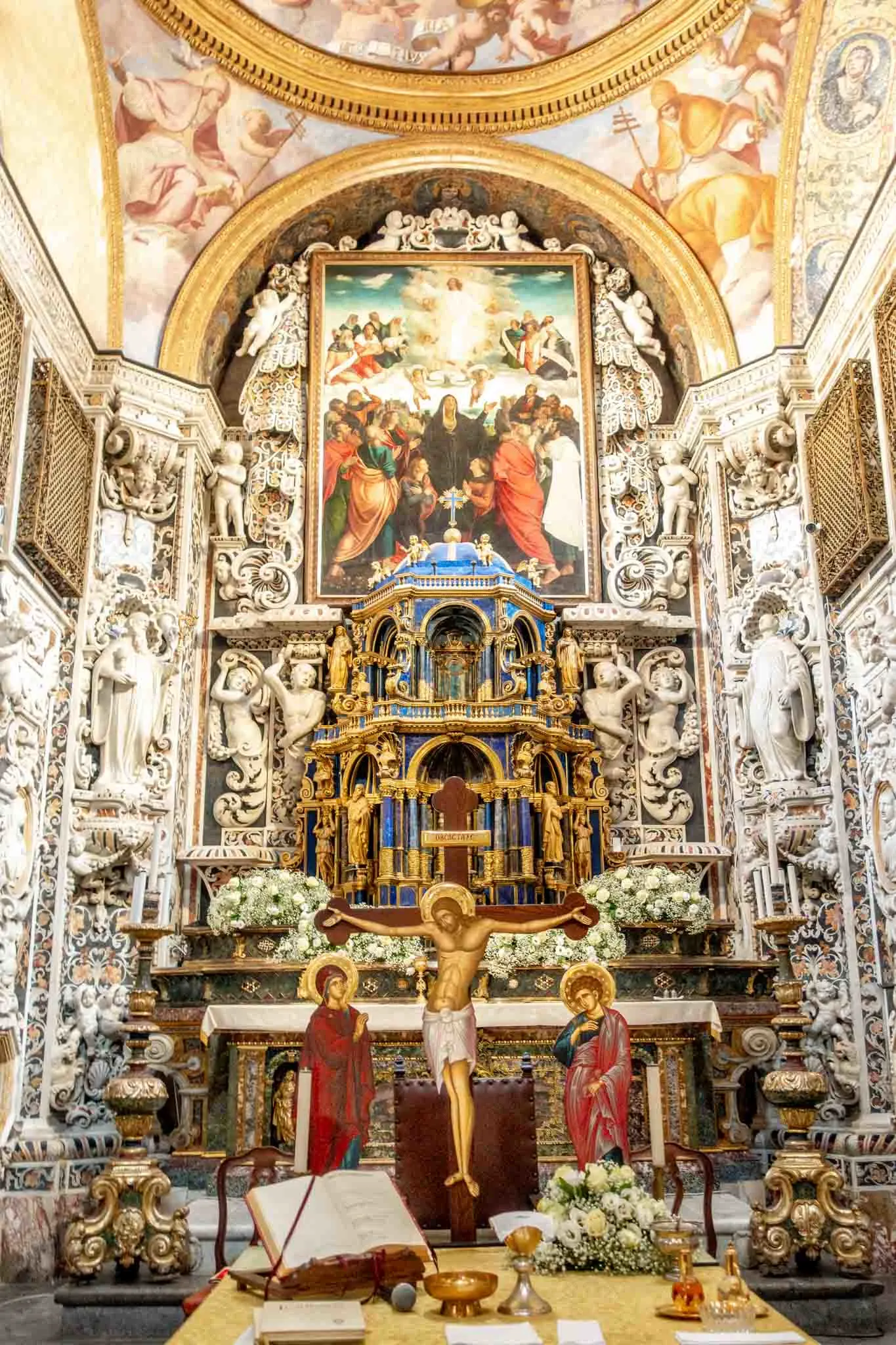
On one side is the church called La Martorana (aka Santa Maria dell’Ammiraglio). This work of art, built in the 1100s, is a mixture of styles because of different influences and changing tastes over the centuries. It’s hard to decide which features are most attention-grabbing—the Baroque façade, the Romanesque bell tower, or the Byzantine dome.
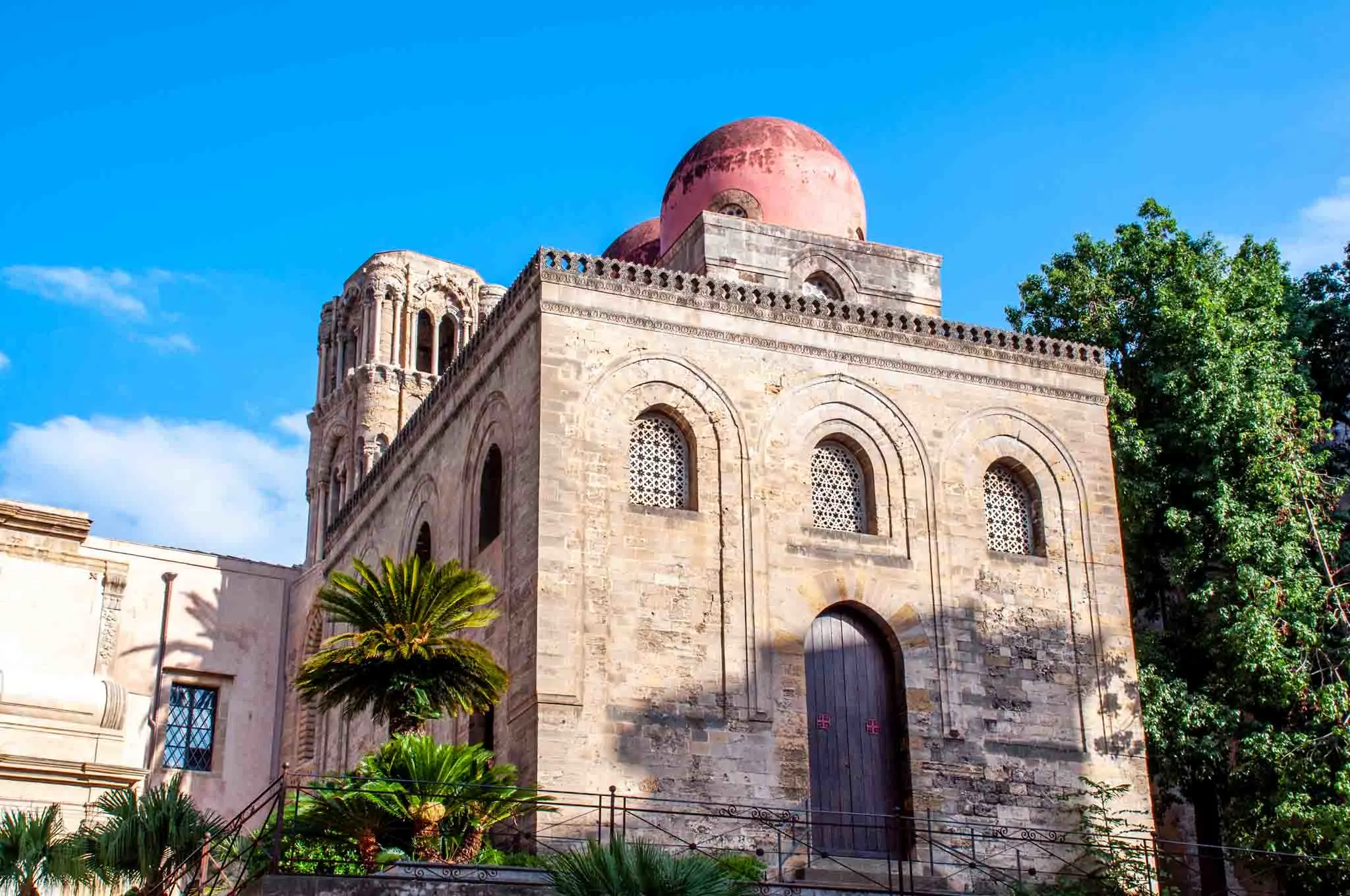
My vote for its most remarkable feature goes to the interior. A series of 12th-century mosaics with gold and bright blue line the vaults and columns in the most dramatic way, leading to the carved marble altar. The beauty is well-known across Sicily—there was hardly a moment during our visit when it wasn’t occupied by a wedding or other special function.
Next door, the Church of San Cataldo stands in stark comparison. Also built around 1160, this church is smaller and simpler. It once took a turn as the local post office, which may help explain its lack of decoration. Designed in the Arab-Norman style and topped with three red domes, its walls are naked but the floor is a beautiful mosaic.
Explore Quattro Canti
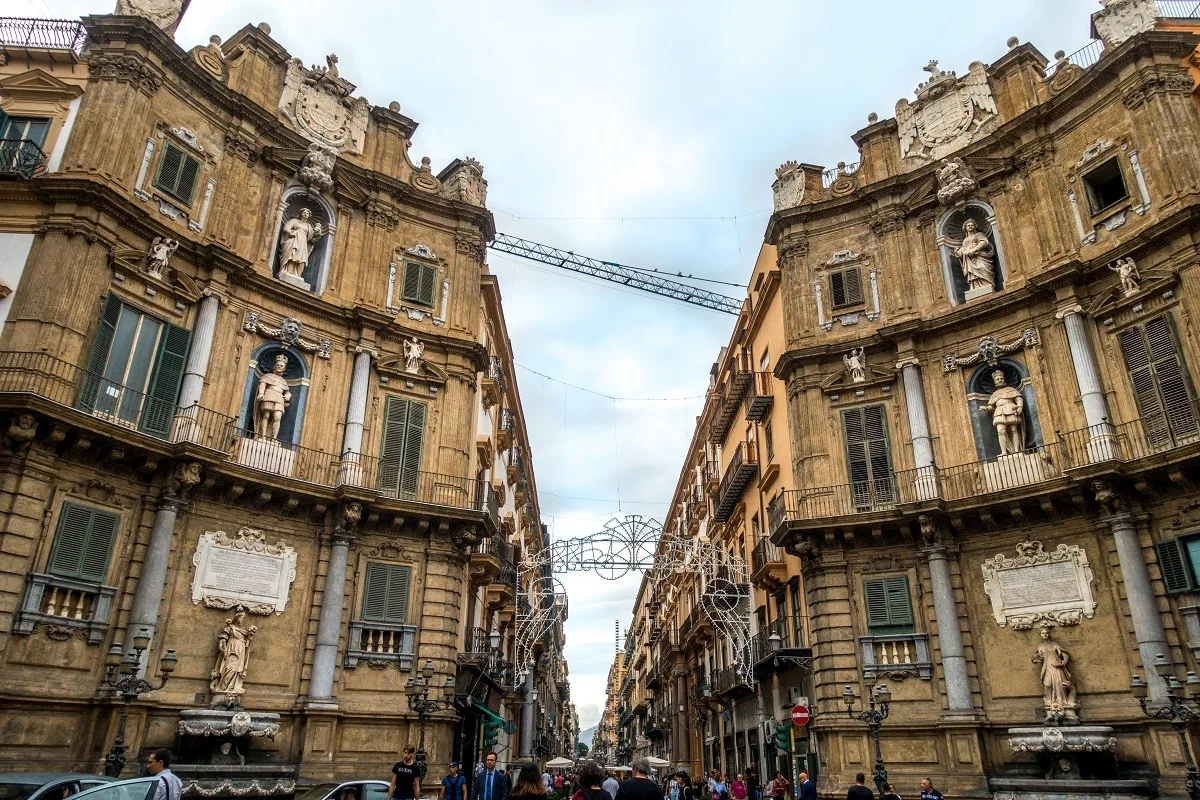
Wandering through the city streets, we came upon Quattro Canti by accident. We were in a hurry on our way to another attraction, but I was so astonished by the fountains and sculptures rising around us that I made Lance stop and stare for a few minutes.
The Baroque open square, properly known as Piazza Vigliena, dates from the early 1600s and is located at the intersection of two major streets in the heart of the city. At each of the four corners of Quattro Canti, a four-story façade is adorned with fountains celebrating the seasons, and the four Spanish kings of Sicily and female patron saints of Palermo gaze out watchfully from niches in the walls.
It is a brief but worthwhile stop that makes you feel like you’ve stepped into the Renaissance.
See street art
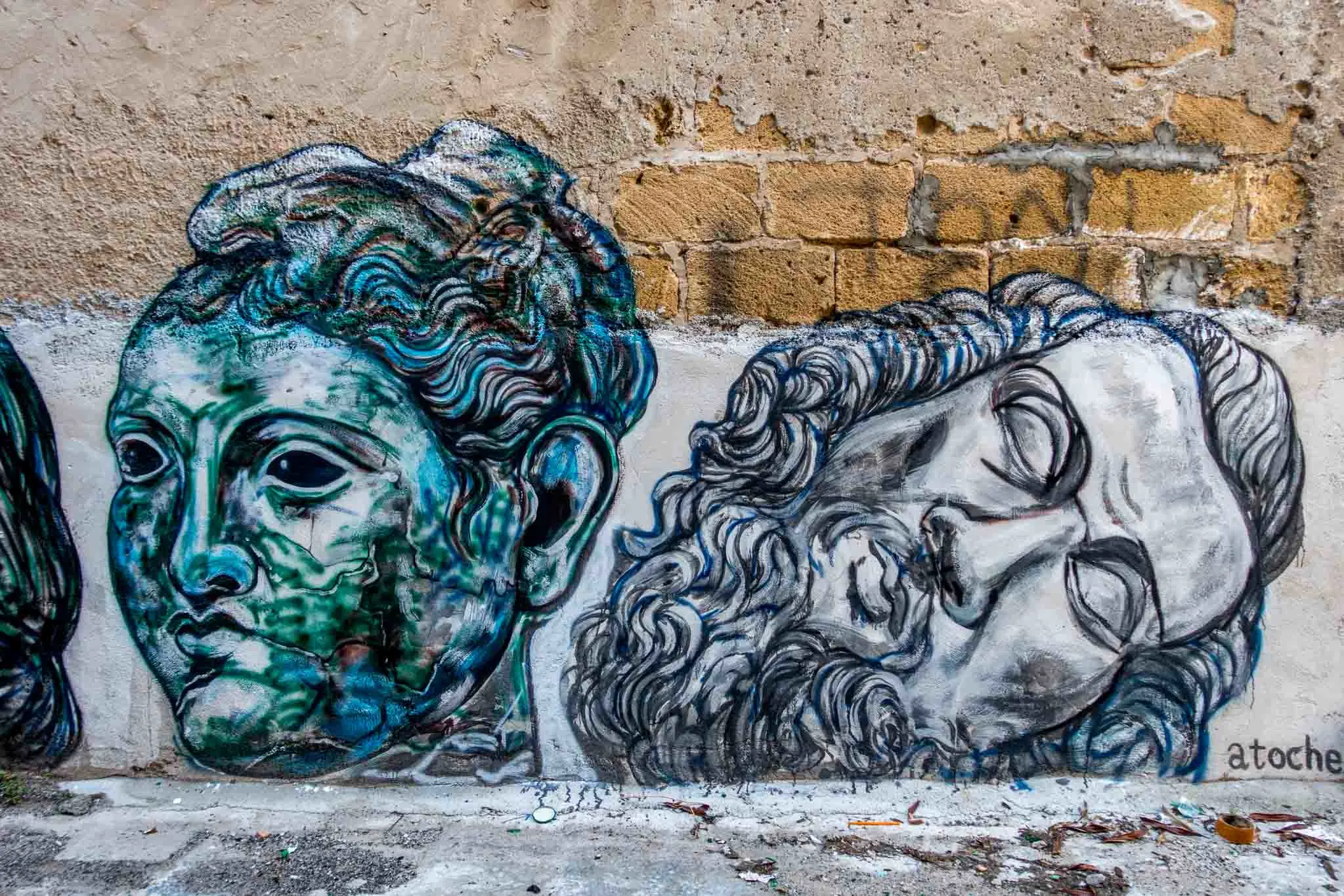
Street art is truly an art form in Palermo. No longer perceived as vandalism or a purely political act, street art is not only accepted but is encouraged in parts of the city.
Business owners and the government alike have seen how the addition of street murals can change a previously run-down or abandoned area into an open-air gallery. There are now nearly 300 works of street art in the city, so they’re not hard to find in the city center. We encountered many works around the Capo and Vucciria markets, and this map can help you find more.
Marvel at Palatine Chapel
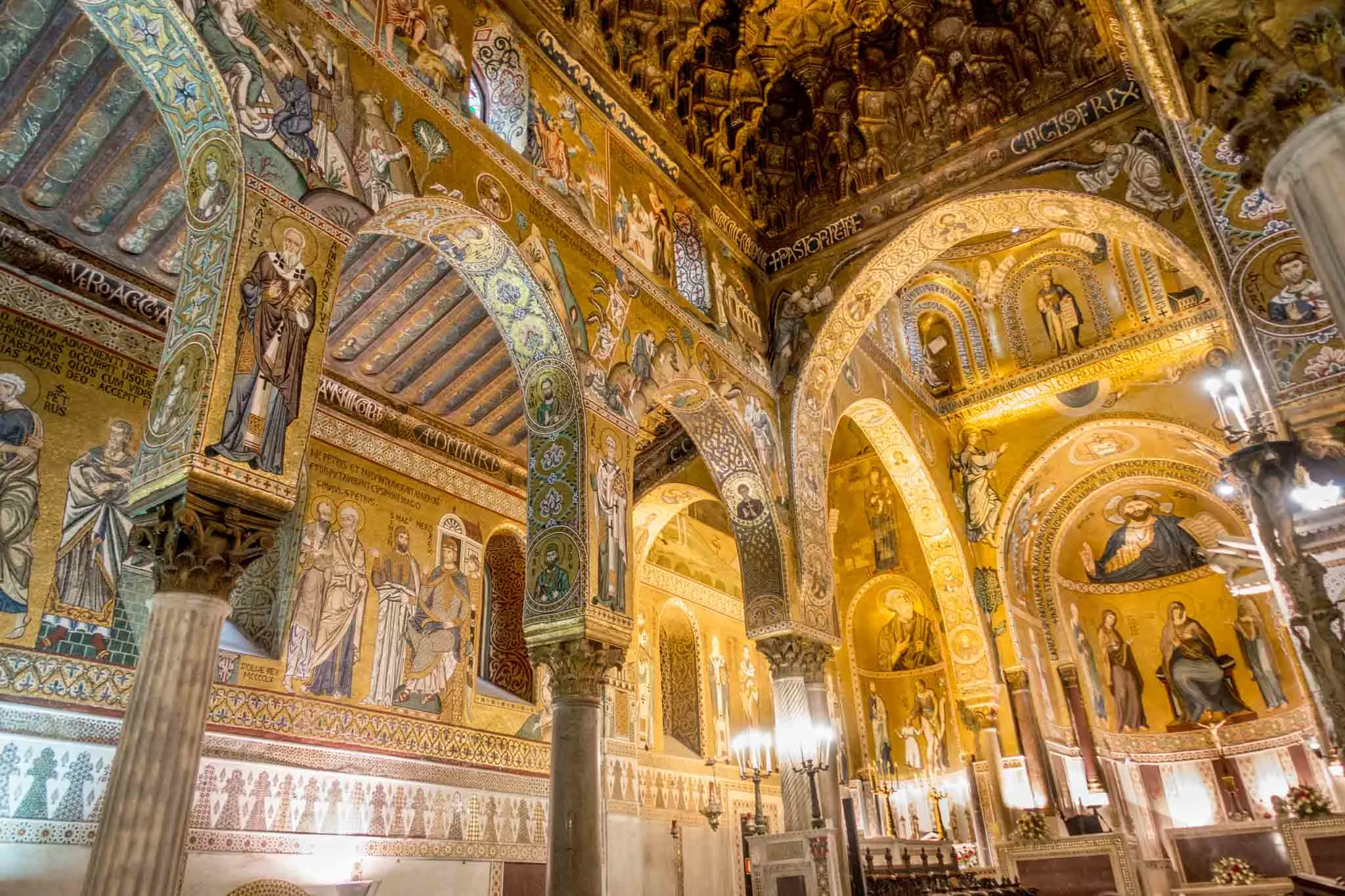
Even at nearly 900 years old, the Palatine Chapel (Cappella Palatina) hasn’t lost its shine. Located at the Palace of the Normans (Pallazzo dei Normanni), it is one of the best surviving Byzantine works of art and architecture in Europe.
The Chapel, which was built in 1140, is covered in brightly-colored mosaics accented with gold leaf and inlaid with precious stones. In addition to the mosaics depicting Jesus and tales of the Old Testament, the walls and floor are inlaid with marble in patterns that have a clear Islamic influence. From floor to ceiling, there is something remarkable in just about every square inch of the room. It’s definitely one of the prettiest things to see in Palermo.
Sample gelato with brioche
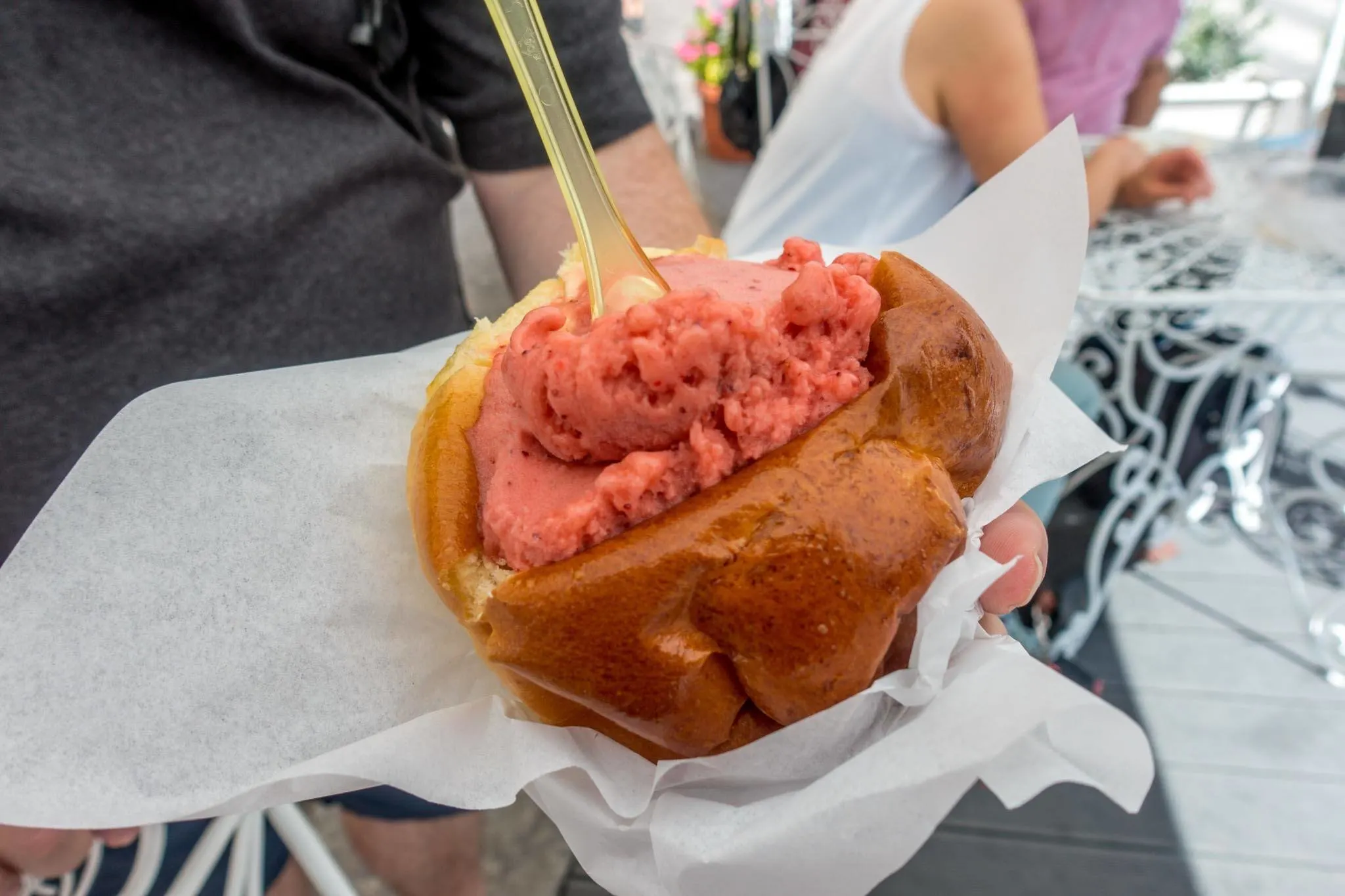
Gelato is undoubtedly one of the best treats on the Italian mainland, and that doesn’t change when you visit Palermo. One unusual distinction, though, is how the Sicilians eat their gelato. Of course, you can find it in a cone or cup like anywhere else, but the preferred way is eating gelato in a brioche. Initially, it didn’t sound that delicious. But then we tried it, and we were completely converted.
Make sure you choose your gelateria wisely. Look for natural (not crazy colors) as a sign of quality—a place with a sign that says “gelato artigianale” (artisan gelato) is usually a good bet.
Visit St. John of the Hermits
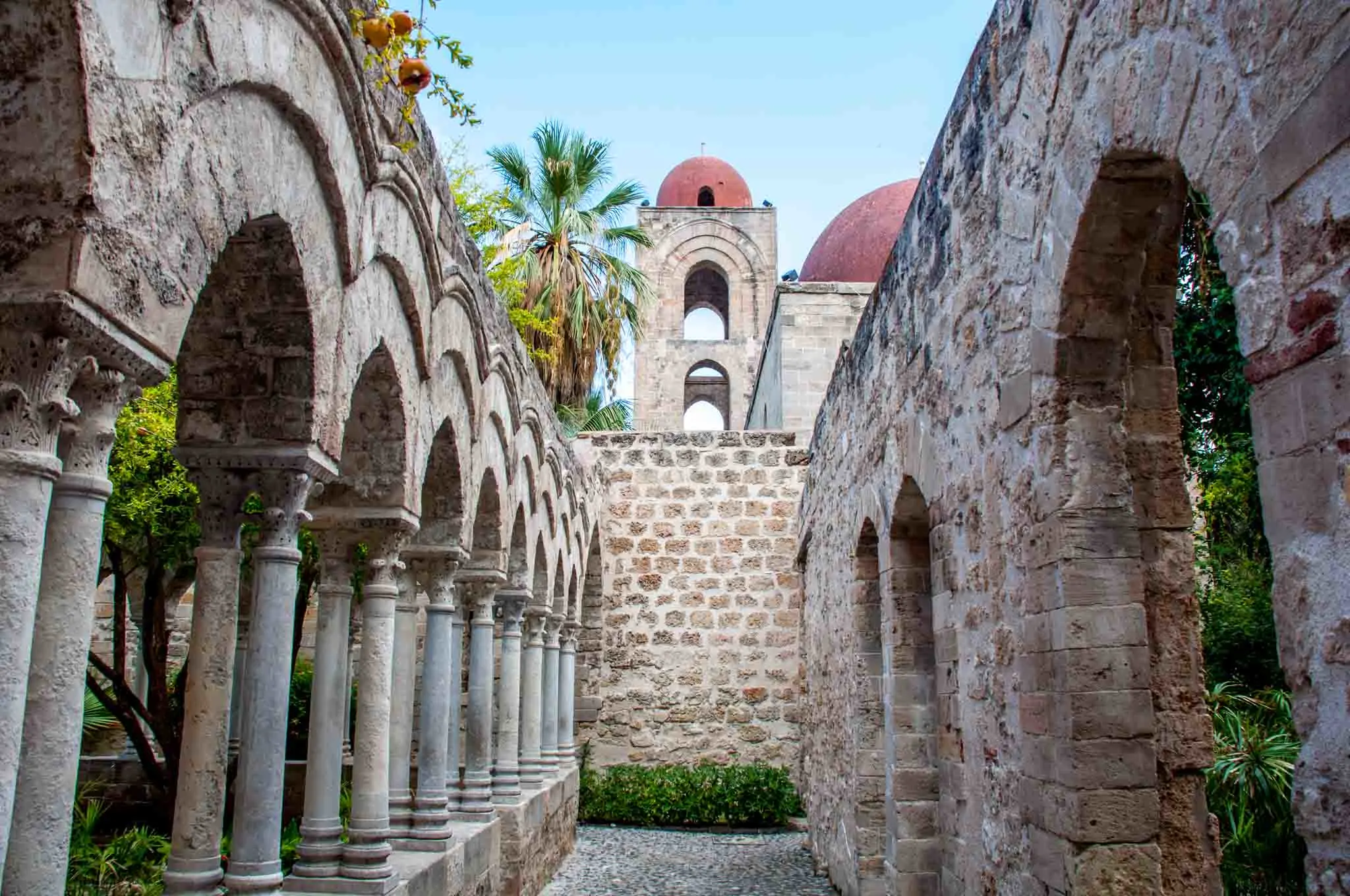
With its distinctive red domes, St. John of the Hermits (San Giovanni degli Eremiti) is certainly attention-getting. The small church dates back to the 6th century and, like many other spots in town, has been both a church and a mosque.
Also like other sites of its considerable age, the building has been changed and influenced by many architectural styles and cultures, earning it a place among the UNESCO-recognized churches of northern Sicily. The courtyard is really the highlight here—with its arches, the remains of an Arab well, and abundant plants, it almost feels like a secret garden.
See the Praetorian Fountain
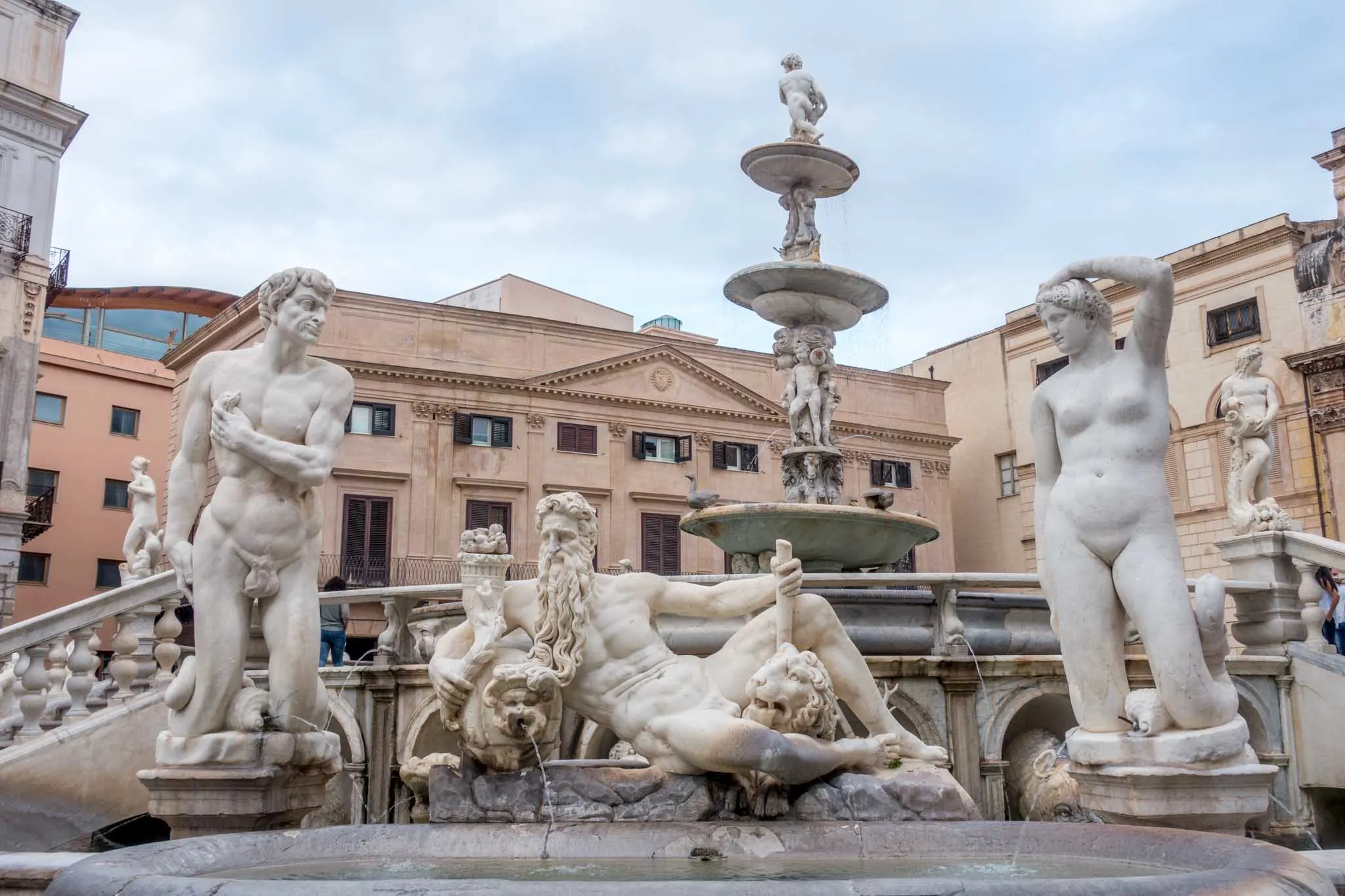
The gorgeous Pretorian Fountain (Fontana Pretoria) dominates the Piazza Pretoria in the heart of Palermo. Amazingly, the hulking creation was made in Florence and transported to this spot in 1574. The highly decorated statues depict ancient Greek gods including Zeus, Poseidon, and Apollo alongside nymphs, animals, and other mythological figures.
Tour Teatro Massimo
The largest opera house in Italy, Teatro Massimo is the pride of the city. Our B&B host couldn’t stop gushing about its beauty and the quality of the performances here.
The theater was intended to impress visitors at every opportunity, beginning with its physical appearance. The architecture includes elements of the Greek temples at Selinunte and Agrigento, and even just climbing the steep steps outside, you know you’re visiting somewhere special.
The Teatro Massimo has regular concerts and opera and ballet performances. If you don’t have time to fit one in, consider taking one of the half-hour tours that run from 9:30-5:30 every day.
Go underground at Capuchin Monastery Catacombs
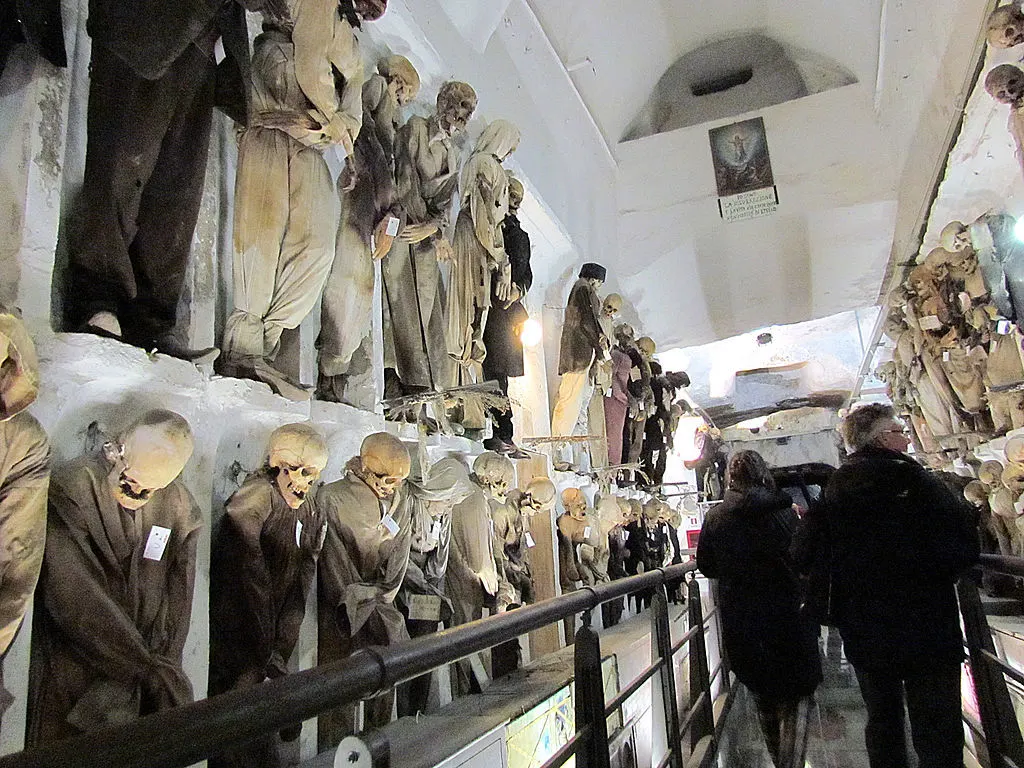
One of the top things to do in Palermo is also one of the most macabre—a visit to the Capuchin Catacombs. For over 400 years, the catacombs have been the final resting place for monks, celebrities, and wealthy laypeople. But unlike at many catacombs, you won’t just see bones.
At the Capuchin Catacombs, over 8000 full, mummified bodies are on display on shelves and hanging from the walls. It’s definitely an unusual attraction, reflecting the monks’ belief in the temporary nature of life followed by salvation in Heaven. Note that the catacombs are closed for two hours in the afternoon and have limited hours on Sunday.
Visit Mondello Beach
Just 15 minutes north of the city, you’ll find Mondello Beach, which makes an ideal place to relax and enjoy the Mediterranean on a warm day. The seaside resort is easy to reach by bus, so it can get crowded, but it’s worth it.
Walk through Porta Nuova
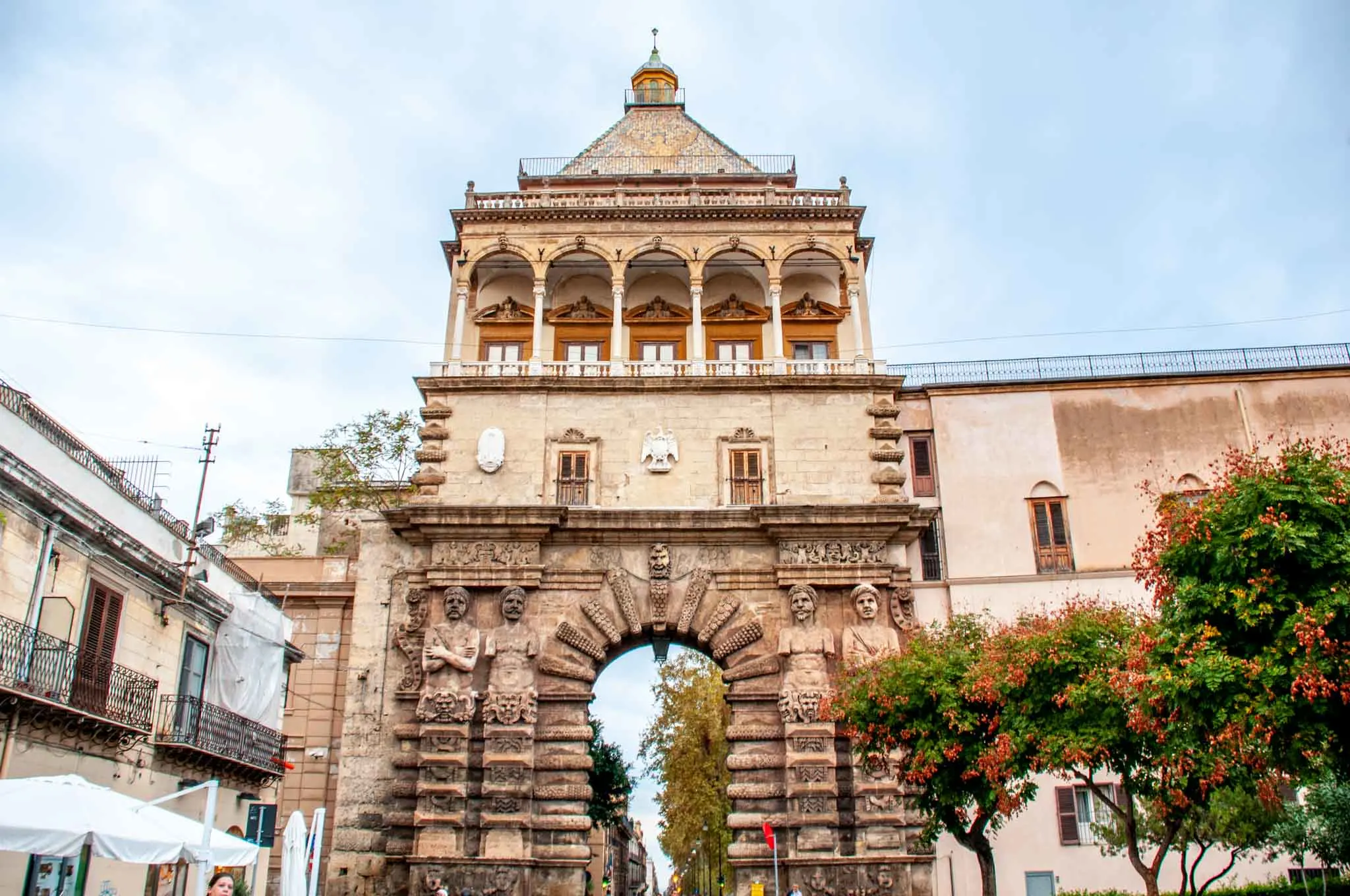
Right by the Palace of the Normans is the Porta Nuova. The monumental city gate is the entrance of the Cassaro, the most ancient street in the city.
First built in 1583, the Porta Nuova is hard to miss because it’s in the center of the tourist zone. Stop for a minute to admire the carvings as you walk through.
See the Cathedral of Monreale
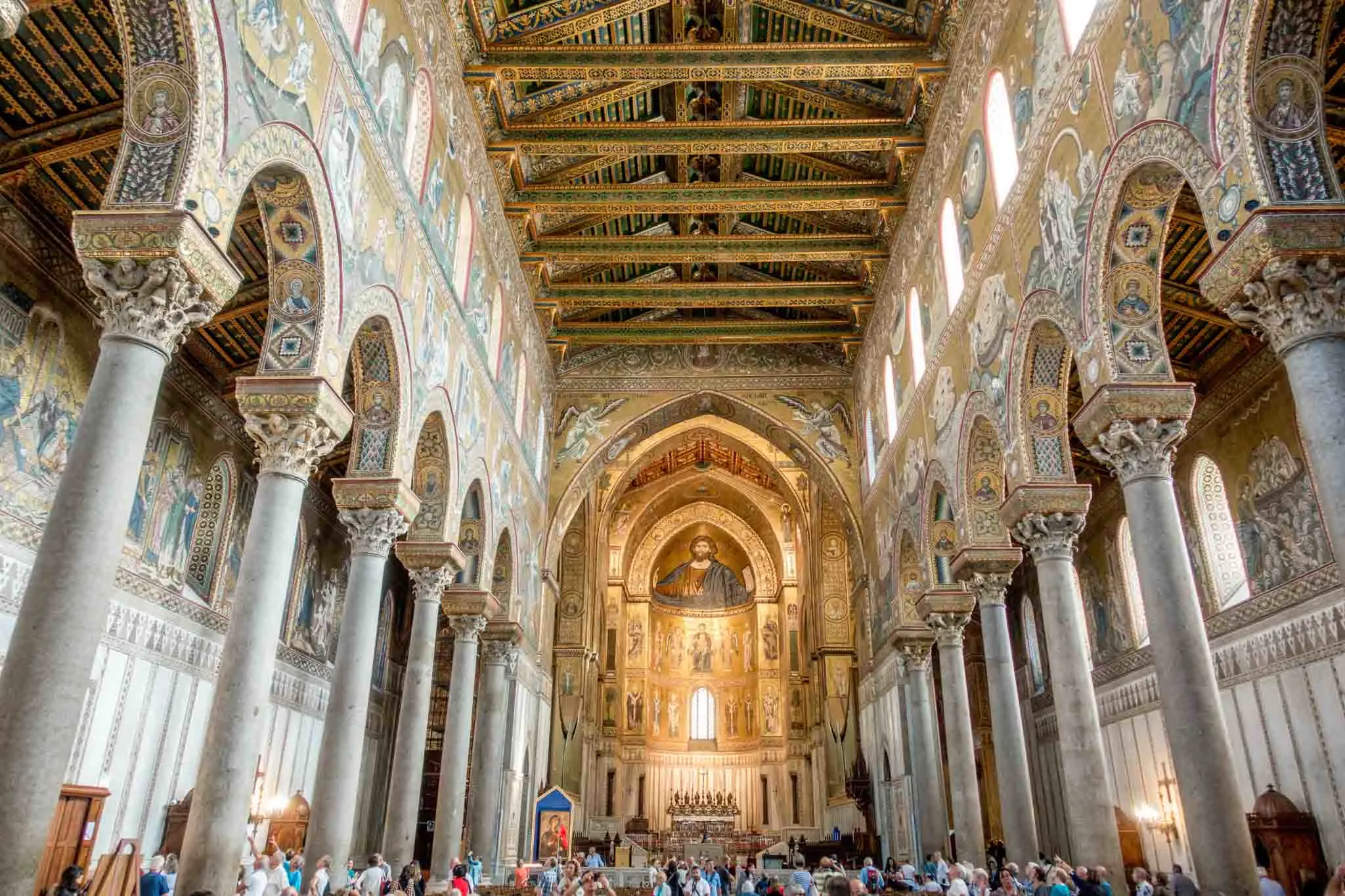
The top Palermo sightseeing spot is actually just a bit outside the city. Sitting on a hill just 9 miles from the city is Monreale, the home of the amazing 12th-century Cathedral of Monreale. The massive mosaics inside are similar to those at the Palatine Chapel only much, much larger.
The Arab-Norman Cathedral of Monreale has 130 mosaic scenes, 200 carved columns, and the imposing 65-foot-tall mosaic of Christ Pantocrator over the altar. Much of the mosaic work is covered in gold—experts estimate as much as 5000 pounds of it.
Even if you’re not usually impressed by churches, this one is worth a stop. Coming here is one of the top things to do in Sicily. After your visit, wander the streets and grab a coffee or one of the many fresh juices at stands and cafes around town. The bus ride is only about 35 minutes.
Palermo was just one stop on our Sicily trip.
Read more about the other cool cities here.
Wander the streets of Cefalu
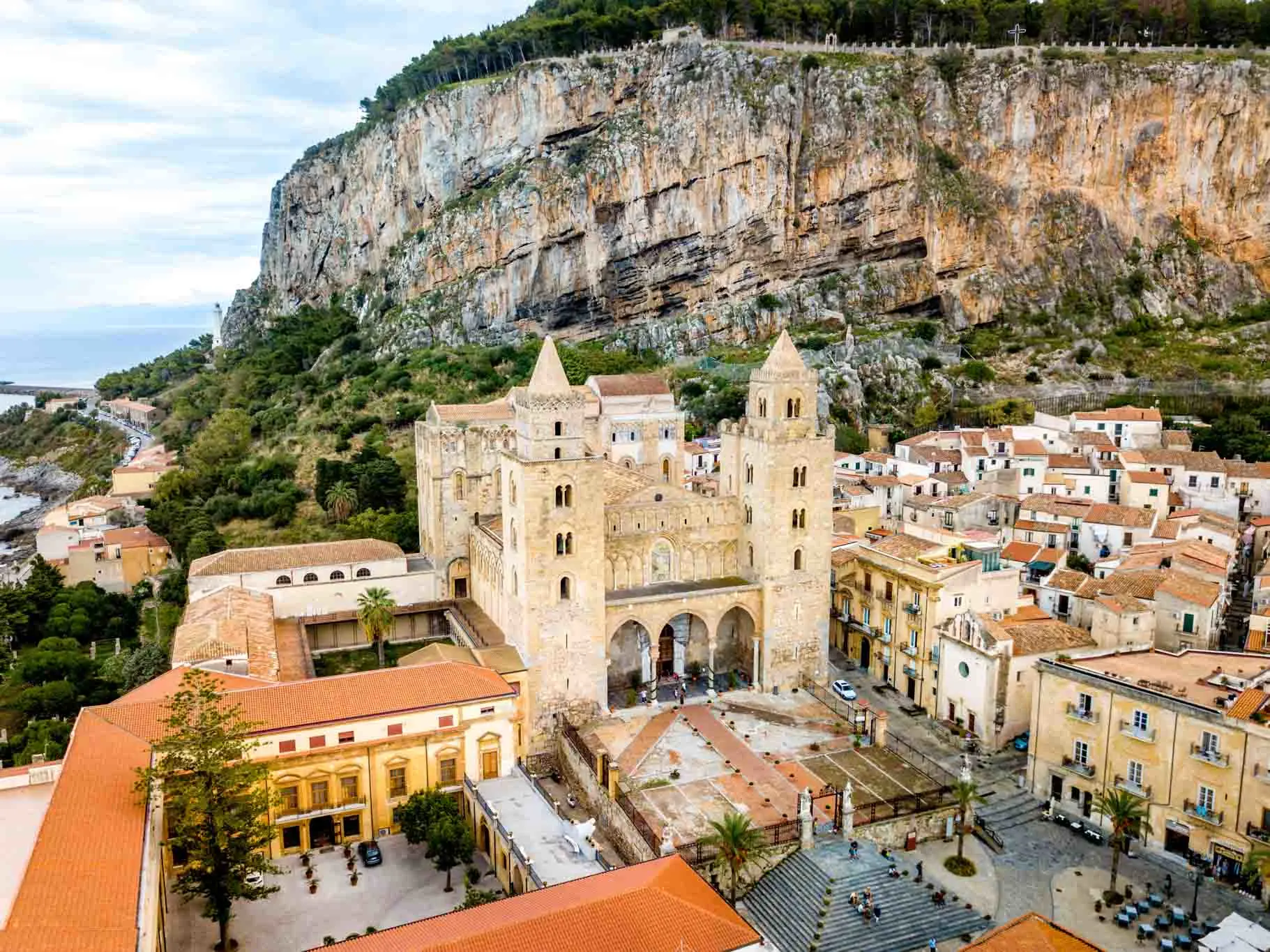
An easy 50-minute train ride from Palermo will deposit you in the gorgeous city of Cefalu. Visit the beach, grab lunch by the sea, or wander the winding streets. Cefalu Cathedral, a UNESCO World Heritage Site, is also a must-visit. It’s almost as interesting from the outside as it is inside. If you’re feeling particularly adventurous, climb the hill for panoramic views.
Where to Stay
Palazzo Pantaleo: This charming guesthouse has free private parking and excellent breakfast (Read reviews and book a room)
Massimo Plaza Hotel: This highly-rated hotel is located just across from Teatro Massimo, and some rooms offer balconies with a theater view(Read reviews and book a room).
Laura Longwell is an award-winning travel blogger and photographer. Since founding Travel Addicts in 2008, she has written hundreds of articles that help over 3 million people a year get the most out of their travel. In that time, she has visited nearly 60 countries on 5 continents, often returning to favorite destinations over and over again. She has a deep love of history, uncovering unexpected attractions, and trying all the good food a place has to offer.
In addition to Travel Addicts, Laura runs a site about her hometown of Philadelphia—Guide to Philly—which chronicles unique things to do and places to see around southeastern Pennsylvania. Her travel tips and advice appear across the web.

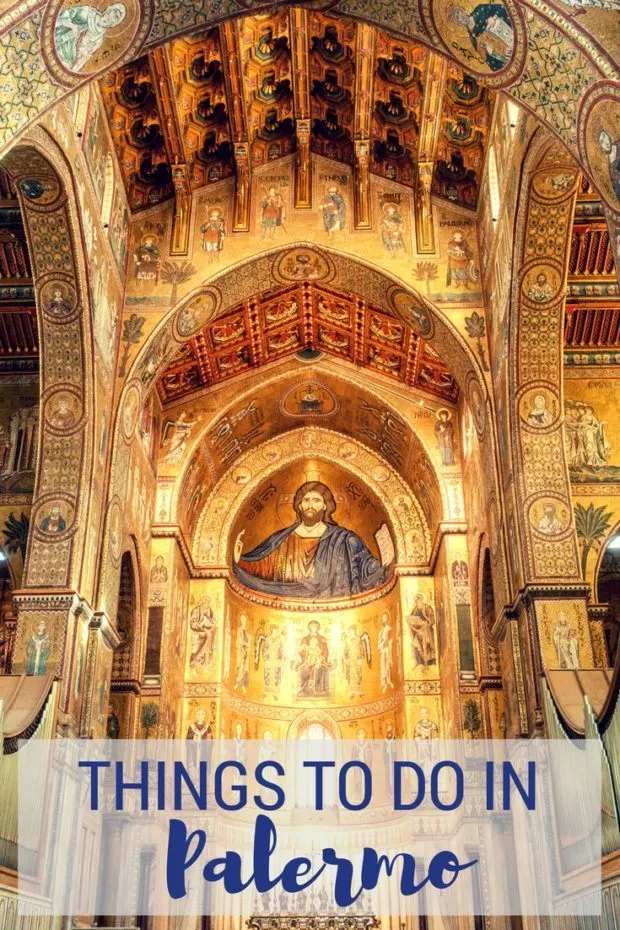
barbara jones
Monday 20th of May 2019
Thank you. This brought back fond memories of a brief but glorious trip to Palermo with friends a few years ago. It is as you describe, an intriguing and beautiful city, somewhat decayed but vibrant and surprising. It had still not been gentrified or spruced up and was a little bit crazy, especially the traffic. The best food I ever ate may have been in Palermo - stuffed swordfish at a restaurant which tumbled from the pavement into the actual road. Not to mention the liqueur which was offered to us at the end of the meal. A magical place.
Tomasz
Wednesday 15th of May 2019
Since 2018 city centre is fully pedestranized (big area of ca. 10 square km). Recently busy streets are converted in outdoor restaruants and bar. Palermo became dream place!